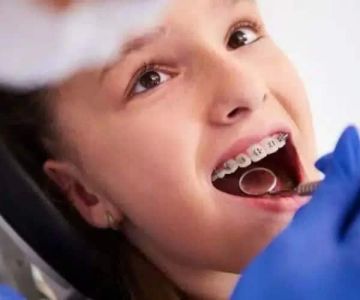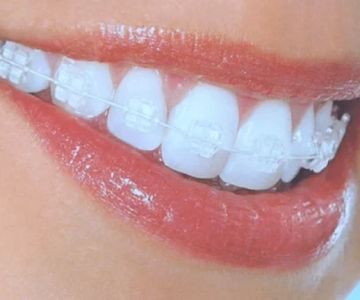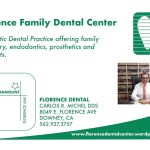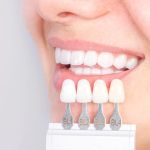Underbite Treatment: Effective Options to Correct an Underbite
- 1. Understanding an Underbite
- 2. What Causes an Underbite?
- 3. Signs and Symptoms of an Underbite
- 4. Underbite Treatment Options
- 5. How Braces Can Help with Underbite Correction
- 6. Surgical Solutions for Severe Underbites
- 7. Real-Life Experiences with Underbite Treatment
- 8. Underbite Treatment at Dentistry Toothtruth
1. Understanding an Underbite
An underbite occurs when the lower teeth protrude beyond the upper teeth, creating a misalignment of the jaw. This condition can affect both the function and appearance of your teeth and jaw, causing discomfort while eating, speaking, or even breathing. It's important to understand that underbites can vary in severity, ranging from mild cosmetic issues to more complex functional concerns that require professional treatment.
Left untreated, an underbite may lead to further dental problems, such as tooth wear, jaw pain, and difficulty chewing. Fortunately, there are several effective treatment options available to correct this condition and restore proper alignment.
2. What Causes an Underbite?
There are several potential causes of an underbite, including genetic factors, developmental issues, and lifestyle habits. Some common causes include:
- Genetics: An underbite can be inherited from your parents, as the alignment of your teeth and jaw is often passed down through generations.
- Jaw Development Issues: An underbite may develop if the lower jaw grows too much or the upper jaw doesn’t grow enough during childhood.
- Thumb-Sucking and Other Habits: Prolonged thumb-sucking or mouth breathing during childhood can contribute to the development of an underbite.
- Trauma or Injury: In some cases, an underbite can occur as a result of a traumatic injury to the jaw that causes it to shift.
3. Signs and Symptoms of an Underbite
Identifying an underbite early can help prevent further complications. Some common signs and symptoms include:
- Visible misalignment of the teeth where the lower teeth stick out beyond the upper teeth.
- Difficulty chewing or biting food properly.
- Jaw pain or discomfort, especially when eating or speaking.
- Speech difficulties, including problems with pronouncing certain words clearly.
- Frequent teeth grinding or clenching of the jaw.
If you experience any of these symptoms, it’s important to consult with an orthodontist or dentist to discuss potential treatment options.
4. Underbite Treatment Options
There are a variety of treatment options available for correcting an underbite, and the best option depends on the severity of the condition. Treatment can include:
- Braces: For many people with a mild to moderate underbite, braces are a common solution. Braces work by gradually shifting the teeth and jaw into proper alignment over time.
- Aligners: Clear aligners, such as Invisalign, are another option for those with less severe underbites. These custom-made trays can be worn to slowly move teeth into the correct position.
- Jaw Surgery: In more severe cases, surgical intervention may be necessary. Jaw surgery is typically recommended when the misalignment is caused by a structural issue in the jawbone.
Consulting with a dental professional is essential in determining the best approach for your unique situation.
5. How Braces Can Help with Underbite Correction
Braces are one of the most effective ways to treat an underbite, especially when the condition is caused by dental misalignment rather than skeletal issues. Traditional metal braces use brackets and wires to gently shift the teeth into better alignment over time. For some patients, braces may be paired with other appliances like headgear or rubber bands to assist in moving the jaw.
Braces treatment typically lasts between 12 to 24 months, depending on the complexity of the case. After treatment, many patients may need to wear a retainer to maintain their new bite and prevent the underbite from returning.
6. Surgical Solutions for Severe Underbites
In cases where the underbite is caused by structural issues with the jaw, surgery may be necessary. This is typically recommended for individuals whose underbite is severe and cannot be corrected with braces alone. Surgical options include:
- Orthognathic Surgery: This procedure involves repositioning the upper and lower jaw to correct the bite. It's often performed by an oral surgeon and requires a recovery period.
- Chin Surgery: In some cases, surgery on the chin may also be required to create a more balanced appearance and further enhance the results of the jaw surgery.
Surgical treatment is generally considered when the functional or aesthetic issues caused by the underbite are significant and not easily treatable with braces or aligners alone.
7. Real-Life Experiences with Underbite Treatment
Many people with underbites have shared their stories of treatment and success. One patient, Sarah, explains how braces changed her life: “I had an underbite that caused me constant jaw pain and made me self-conscious about my smile. After wearing braces for about 18 months, I noticed a huge difference. Not only do I feel more confident, but I can eat and speak without discomfort now!”
Others, like John, had to undergo surgery to fully correct their underbite: “My underbite was severe, so I needed surgery. The process was challenging, but the results were worth it. I can now enjoy life without the jaw pain I once had.”
8. Underbite Treatment at Dentistry Toothtruth
If you're looking for expert care and personalized treatment for your underbite, visit Dentistry Toothtruth. Our experienced orthodontists and dental professionals can assess your condition and recommend the most effective treatment options, whether it's braces, aligners, or surgical correction.
Don’t let an underbite impact your quality of life. Take the first step toward a healthier, more confident smile today. Click here to learn more and schedule a consultation.




 Midwest Dental - West St. Paul
Midwest Dental - West St. Paul Franklin Dental Center, PA
Franklin Dental Center, PA Christopher R. Madsen, DDS
Christopher R. Madsen, DDS Evergreen Park Dental
Evergreen Park Dental Florence Family Dental Center: Michel, Carlos R DDS
Florence Family Dental Center: Michel, Carlos R DDS David Lee
David Lee The Importance of Oral Health Education During Pregnancy for a Healthy Pregnancy
The Importance of Oral Health Education During Pregnancy for a Healthy Pregnancy Why Skipping Dental Checkups Can Lead to Bigger Oral Health Problems
Why Skipping Dental Checkups Can Lead to Bigger Oral Health Problems Advantages of Porcelain Dental Restorations
Advantages of Porcelain Dental Restorations Best Tips for Brushing Your Teeth Properly for Healthy Gums: Essential Techniques for Oral Health
Best Tips for Brushing Your Teeth Properly for Healthy Gums: Essential Techniques for Oral Health How Can Diabetes Cause Tooth and Gum Problems? Preventing and Managing Oral Health Issues
How Can Diabetes Cause Tooth and Gum Problems? Preventing and Managing Oral Health Issues Healthy Habits for Promoting Good Oral Health and Hygiene: Tips for a Healthy Smile
Healthy Habits for Promoting Good Oral Health and Hygiene: Tips for a Healthy Smile